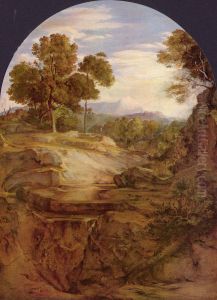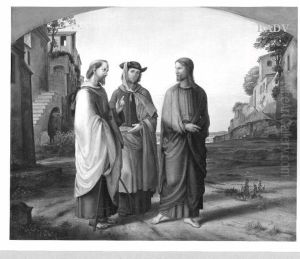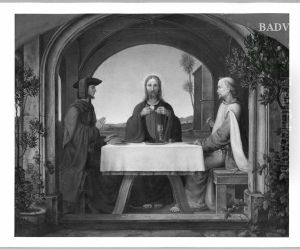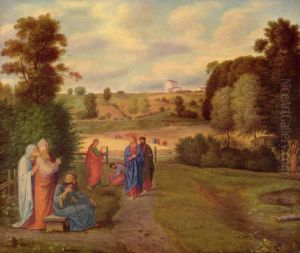Ferdinand Olivier Paintings
Ferdinand Olivier, known more fully as Johann Heinrich Ferdinand Olivier, was a German painter associated with the Nazarene movement, which sought to revive honesty and spirituality in Christian art. Born on April 1, 1785, in Dessau, Germany, Olivier was part of a generation of artists that reacted against the formal academic art of the late 18th century, favoring instead a return to the simplicity and devoutness found in medieval and early Renaissance art.
Olivier initially studied at the Dresden Academy of Fine Arts and later moved to Vienna, where he became acquainted with other like-minded artists, including Friedrich Overbeck and Franz Pforr, who were central figures in the Nazarene movement. The Nazarenes believed that art should serve a moral and religious purpose and often looked back to medieval times for stylistic inspiration, emphasizing linear draughtsmanship and clear, bright colors.
In 1810, Olivier, along with Overbeck, Pforr, and other artists, formed the Brotherhood of St. Luke, later known as the Nazarenes, in Vienna. They lived communally, adopting a monastic lifestyle and a medieval approach to their art, which was characterized by its purity and devout nature. Olivier's works often featured biblical or historical themes, executed with meticulous attention to detail and a deep reverence for nature, which he believed to be a direct manifestation of the divine.
The Nazarenes eventually moved to Rome, where they hoped to study early Christian and medieval art firsthand. There, Olivier produced some of his most significant works, including a series of landscape paintings that combined his religious sensibilities with an acute observation of the natural world. His landscapes are considered pioneering works for the genre in Germany and were influential in the development of the German Romantic landscape tradition.
Ferdinand Olivier's dedication to the ideals of the Nazarene movement waned in later years, and he moved back to Germany, where he continued to paint but also engaged in teaching. He served as a professor at the Academy of Fine Arts in Munich and influenced a new generation of artists.
Olivier's contribution to the history of art is significant for his role in the Nazarene movement and for the way his work bridges the neoclassical and Romantic periods. He passed away on February 11, 1841, in Munich, leaving a legacy that is particularly noted for its spiritual depth and its impact on the course of German art.



